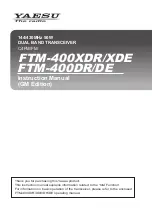
1
4
1
AsteRx4_OEM
14
2.4
Frequency Reference Selection
The receiver can get its 10-MHz frequency reference from its internal TCXO, or from an
external reference source. The clock selection is controlled by the EXTREF_STAT pin
(pin#55), as follows:
EXTREF_STAT pin level Reference
clock
source
Signal at REF_O pin (pin#39)
Pin left open (there is
an internal pull-up)
Internal TCXO
10-MHz square wave from
the internal TCXO.
Pin tied to ground
REF_I pin (pin#43)
None. Output is disabled.
2.5
PPS Out
Pin#38 is the pulse-per-second output. The pulse polarity and rate are user selectable
with the
setPPSParameters
command. Pulse duration: 1.0ms.
During the first seconds after powering up the board, the PPSout pin is in tri-state. Use a
pull-down resistor to avoid a floating electrical level.
2.6
General Purpose Output (GPx)
The GP1, GP2 and GP3 pins are general purpose LVTTL digital outputs, of which the level
can be programmed with the
setGPIOFunctionality
command.
During the first seconds after powering up the board, these pins are in tri-state. Use a
pull-down or a pull-up resistor to have the desired level during boot.
The GPx pins can drive a maximum current of 8mA.
2.7
Baud Rate of Serial Ports
The maximum baud rate supported by the serial COM ports is 460800baud (use the
setCOMSettings
command to set the baud rate). However, this maximum baud rate is
only supported on the LVTTL-level COM pins of the 80-pin connector. These pins have the
prefix “SCOM_” in their name
.
When using the RS232-level COM pins, it is recommended not to use baud rates above
230400baud. The RS232-level pins have the prefix
“
RS232_
”
in their name.












































